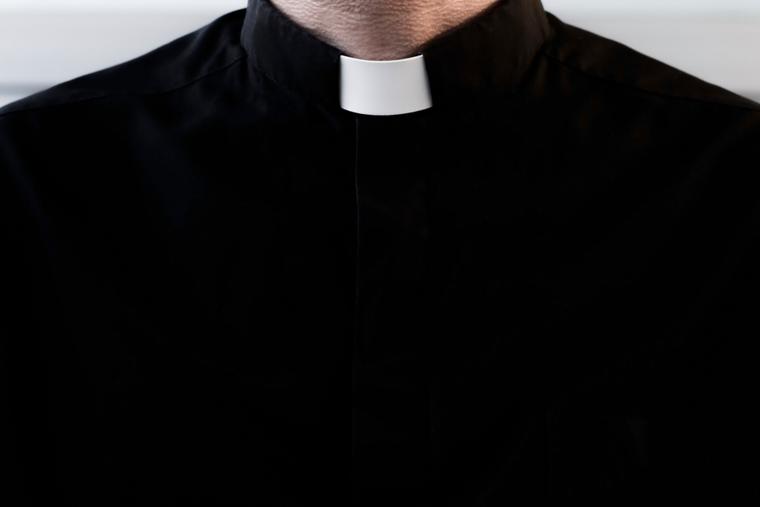FBI Probe Could Help Prosecute Louisiana Priests Accused of Inter-State Sex Abuse
The federal probe could pave the way for further revelations and further lawsuits against the New Orleans archdiocese.

Federal authorities are investigating alleged sex abuse of minors by New Orleans-area Catholic clergy, sometimes going back decades, on the grounds that the accused men could have violated a federal anti-sex trafficking law by crossing state lines. The investigation could provide another means for abuse victims to make their case against their abusers, and possibly file sex abuse lawsuits against Catholic dioceses and other organizations.
The FBI is probing whether accused priests can be prosecuted under various charges including the Mann Act, which bars taking anyone across state lines for illicit sex. Though some criminal claims may date back to the 1970s, the Mann Act has no statute of limitations. The Louisiana State Police is aiding the inquiry.
Federal prosecutors have used the Mann Act to help convict Ghislaine Maxwell, a leading figure in the Jeffrey Epstein sex abuse ring, and music star R. Kelly. In 2013, a Baptist pastor was sentenced to 12 years in federal prison for taking a 16-year-old girl across state lines for illicit purposes.
Federal authorities have interviewed more than a dozen alleged victims this year, the Associated Press reports. Some of the victims allege they were abused by a New Orleans-based priest on trips to Mississippi camps or Texas and Florida amusement parks.
A former altar boy told the AP his abuse began in the 1970s when his accuser allegedly sexually abused him on trips to Colorado and Florida.
The probe also involves allegations against former New Orleans priest Lawrence Hecker, now 90. Hecker was removed from ministry in 2002 after alleged abuse ranging in nature from fondling to rape. He allegedly abused children decades ago on out-of-state trips. He was dismissed from the clerical state in 2018.
Richard Trahant, an attorney for Hecker’s alleged victims, in a court filing alleged that the records under the confidentiality order will reveal that the last four archbishops of New Orleans knew Hecker was a serial sexual abuser of children.
The archdiocese list, however, said it first received an allegation against Hecker in 1996. Though attorneys have claimed that Archbishop Philip Hannan was aware of Hecker’s abuse, Hannan left office in 1988, NOLA.com reported in 2020.
The federal probe could pave the way for further revelations and further lawsuits against the New Orleans archdiocese.
In May 2020, the Archdiocese of New Orleans announced that it was filing for bankruptcy. Survivors who filed claims against the archdiocese in bankruptcy courts by the March 1, 2021 deadline would not be able to sue in state courts. The archdiocese faced about 400 sex abuse claims in bankruptcy court and these were a major motive for the bankruptcy effort.
Victims could still sue their alleged abusers who operated in religious orders or lay ministries, the New Orleans Advocate reported.
Bankruptcy proceedings have sealed Church documents that were produced by lawsuits with a confidentiality order. Critics say the records document years of abuse claims, interviews with clergy accused of abuse, and a pattern of Church leaders reassigning accused clergy without reporting their alleged crimes to law enforcement.
The archdiocese in 2018 published a list naming 57 “credibly accused” clergy. Six more names were later added to the list. An Associated Press analysis faulted the initial list, arguing that it undercounted by at least 20.
Peter G. Strasser, a former U.S. attorney in New Orleans, declined to bring charges. He told the Associated Press he had “naively” thought federal charges could be possible but faced many obstacles, including the complexities of “putting the church on trial” for conspiracy and other charges.
“The issue has always been determining what is the federal crime,” he said.
Revelations of the extent of clergy sex abuse began in 2002, causing much scandal and pain but also efforts to strengthen support for victims, child protection programs, abuse reporting methods, and disciplinary action against abusive clergy and their superiors.
The U.S. bishops’ annual report on Findings and Recommendations on the Implementation of the Charter for the Protection of Children and Young People, released in November 2021, said there were fewer than 24 new allegations of recent abuse by clergy.
However, over 4,200 new allegations of historic abuse were reported in the report’s one-year coverage period.
Statistical graphs of the dates of reported abuse incidents continue to show that the numbers of alleged clergy abuse incidents peaked in the 1970s. Lawsuits from historic abuse have cost the Catholic Church in the U.S. hundreds of millions of dollars.
In 2021, the Louisiana legislature passed a law creating a three-year “lookback” window for survivors of child sex abuse to file lawsuits against their alleged abuser, even when the statute of limitations would normally impede such lawsuits.
At the time, the victim’s 28th birthday was the deadline for child sex abuse lawsuits
The archdiocese told CNA in October 2020 that it had been seeking to dismiss from the clerical state priests who had been removed from ministry over accusations of child sex abuse, in the wake of the 2018 report. Under canon law, dioceses are obligated to provide for the needs of priests removed from ministry, such as for housing and health care. They are not obliged to provide for the needs of priests who have been dismissed from the clerical state.
- Keywords:
- sex abuse
- clergy sex abuse
- jeffrey epstein
- fbi
- bankruptcy
















